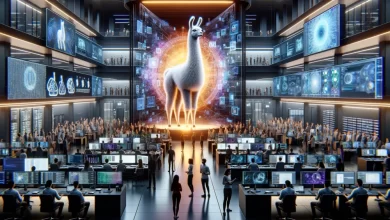How generative AI can transform small businesses

Chandra Sinnathamby, Director, Digital Media B2B Strategy & GTM, Asia-Pacific, Adobe. Source: Supplied.
After some initial hesitation that comes with adapting to change, the powerful benefits of generative AI are steadily being recognised by businesses of all sizes.
For small to medium businesses (SMEs) the potential is vast — thanks to progress in natural language processing, machine learning, and predictive analytics, AI can provide SMEs with crucial understandings into customer behaviour, market trends, and potential business prospects.
But while 68% of Australian leaders and employees say that AI has a positive impact on work, only 22% are currently using it, according to Adobe’s Future of Digital Work 2023 report.
That means many SMEs are missing out on the cost-effective, time-saving productivity hacks that can come with adopting generative AI platforms.
The reasons behind the hesitation to embrace AI are primarily security concerns, executives’ resistance, and a lack of comprehensive understanding, says Chandra Sinnathamby, Director, Digital Media B2B Strategy & GTM, Asia-Pacific at Adobe.
“Technology in general has always been a key enabler of productivity gains and also accelerating businesses for growth. Generative AI in particular is one of those key drivers today,” says Sinnathamby.
“Like any adoption curve, you’ll have early adopters and laggards — the biggest challenge is showing them how easy it is and my advice is that the owner of the business needs to showcase how it is helping in day-to-day life,” he says.
So how can generative AI help SMEs? We look at how advancements in technology are already helping SMEs and what lies ahead.
Increasing productivity
A new report from the Productivity Commission shows that labour productivity fell sharply in 2022-23. Despite an increase in hours worked, economic output failed to keep pace. In fact, productivity fell by 3.7% — driven by a 6.9% increase in hours worked by Australians — the highest annual increase in history.
For businesses that are facing a decline in productivity, AI offers many ways to save time and cut costs. An example is the recently released Acrobat AI Assistant from Adobe, a generative AI-powered conversational engine integrated into Reader and Acrobat workflows.
AI Assistant instantly generates summaries and insights from PDFs, answers questions and formats information for sharing in emails, reports and presentations, says Sinnathamby.
“This is one of those tools that we believe can really help address the productivity needs of small businesses in Australia, which are the backbone of the country,” he says.
“AI Assistant can summarise a PDF, list the key points and save businesses hours that would normally have been spent reading through a detailed contract, brief, or any other business document,” he says.
“It also provides the ability to get insights, ask questions and compare information across multiple documents.”
Retaining staff
Providing employees with ways to do more meaningful work is also a major benefit generative AI is bringing to small businesses. According to the Adobe’s Future of Digital Work 2023 study, more than 80% of people reported they want to accelerate business processes to free up time and remove redundant tasks.
“That’s really critical because it shows that most people want to do work that drives a higher level of job satisfaction for them. If you talk to any HR leader, the higher the job satisfaction, the higher the retention of staff will be,” says Sinnathamby.
Using generative AI tools, such as Acrobat AI Assistant, means employees are freed up from time-consuming tasks and can focus on those that bring greater value to the business, and the employee’s own wellbeing.
“The average knowledge worker spends about 8.2 hours a week looking for information.
This tool can save hours of time that can then be better spent on some other part of the business,” he says.
“For example, if you use it to summarise the requirements of a tender document, you can then use that time saved in responding to those requirements.”
For those resisting the adoption of generative AI, Sinnathamby’s advice is to do some research and start trialling different tools.
Generative AI is moving from the playground to production, according to McKinsey research, and is the number one priority for CEOs to focus on in 2024.
“This is just the beginning,” says Sinnathamby. “Those that adopt early will gain significant advantage — so by definition, if you’re not the one adopting, you’re going to be left behind.”
To know more about Adobe’s Acrobat AI Assistant, please visit here.



